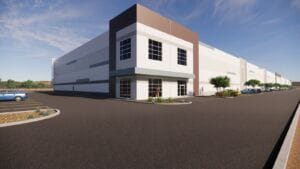The 8th Annual Phoenix Land and Housing Forecast, presented by Land Advisors Organization, provided a provocative and insightful breakdown of the trends, activity and outlooks within the local real estate market.
The event was started by Land Advisors Organization, the nation’s largest brokerage firm focused exclusively on land, in 2009 to provide more optimistic and fair coverage of the real estate industry’s future in Greater Phoenix following the start of the Great Recession.
This year’s event offered a wide range of information from a national market overview and where Phoenix ranks to key innovations in the housing market and the rise of the iBuyer through market disruptions like the launch of OfferPad and Opendoor.
Greg Vogel, CEO at Land Advisors Organization, described the theme of the event as “vitality at last,” as a reference to Phoenix’s long, slow and steady recovery since the last downturn and positive market conditions being faced today.
National overview and where Phoenix ranks
First up was John Burns, CEO of John Burns Real Estate Consulting and author of “Big Shifts Ahead: Demographic Clarity for Business,” who analyzed the national market and how Metro Phoenix compares.
He says the greatest factors always impacting the housing market are: job loss, construction levels and affordability.
Burns mentioned two things to keep an eye on in 2018 and beyond. First was the recently announcement of the merger of two of Arizona’s Top 5 homebuilders, which if approved will account for 13-percent of Arizona’s total market share. In total, the combined company will control approximately 240,000 home sites and have about 1,300 active communities in 49 markets across 21 states.
The other is the rise of “build for rent concepts.” It’s when new homes are built and put on the market as rentals instead of waiting for a sale in order for the real estate investor to start recouping investments. These can already be seen at Verrado in Buckeye and Eastmark in Mesa, two of the state’s top-selling master-planned communities.
Although Phoenix currently is in its third largest expansion cycle ever at 8.3-years, Burns predicts an end to the expansion cycle once it reaches 10.5-years.
Looking ahead, he’s forecasting “an economic hiccup” in 2020, which he describes as a slowdown but not a full downturn.
Not your grandpa’s Phoenix
City of Phoenix Economic Development Director Christine Mackay led an update on economic development in the Valley that she describes as “changed into a highly competitive and sought-after market for companies to relocate and expand.”
In reference to the nation’s fastest-growing city, Mackay says, “This isn’t your grandpa’s Phoenix.”
Most notably she highlighted the growth of technology companies in the Valley that are starting to move back to the Central City. In fact, Mackay said, there has been a 318-percent increase in tech companies in the Central City.
The main reason we can compete with other tech markets like San Francisco, Dallas and Austin, she says, is because of Metro Phoenix’s strong talent pipeline and workforce demographics.
Overall, Mackay says, Metro Phoenix has experienced a 140-percent growth in the number of companies choosing to relocate regional or corporate headquarters to the Valley.
Moving forward, she will continue to pursue focused and strategic efforts to attract new companies and jobs to the area in the industries of biosciences, advanced manufacturing and technology, to name a few.
Vitality at last
Greg Vogel started his Metro Phoenix market forecast by noting clients, banks, builders and homebuyers are all doing better, but he remains concerned about a few factors.
Mainly, the fact that the nation’s natural population rate, which is the birth rate minus the death rate, is currently at the lowest level since 1980. In addition to concerns about the slow rate of Millennials having kids and needing homes, Vogel points out an acute shortage of affordable homes.
Thus, he said, homes on the lowest end of the price spectrum are experiencing the strongest appreciation due to a lack of supply in the market. Meanwhile, the opposite is true for homes at the highest pricing levels.
Although, Phoenix approved 19,282 single-family homes permits in 2017, Vogel says, the market is still under permitted. In fact, he said, of the 373 subdivisions currently under construction in the Valley, 229 will be built-out in the next 12 months.
Vogel predicts housing growth is headed to the south and west parts of the Valley and that construction labor shortages will partially be solved by new building systems. He also expects to see more garden-style apartments being developed along the outer edges of popular submarkets.




